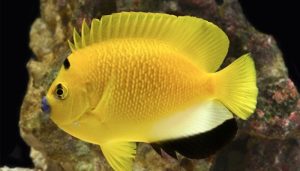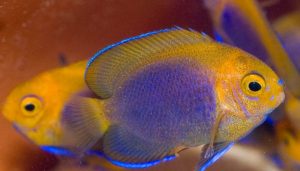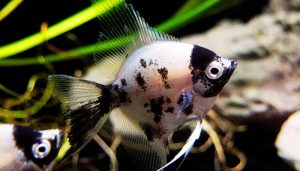Maintaining a healthy and thriving pond ecosystem is no easy task, but one of nature’s best-kept secrets lies in its very waters—fish that eat algae in ponds. These unsung heroes tirelessly keep algae growth in check, ensuring your pond remains crystal-clear and balanced.
Algae, while a natural part of any aquatic environment, can quickly spiral out of control, leading to murky water and unhealthy conditions for other pond inhabitants.
The right selection of algae-eating fish not only enhances water quality but also adds beauty and life to your pond.
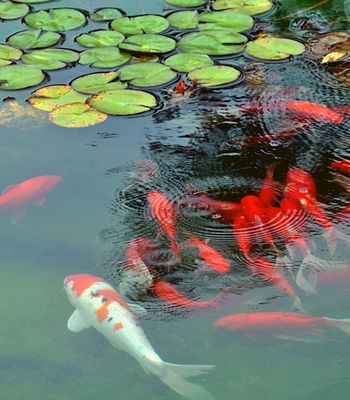
But which fish are best suited for this job? In this blog post, we’ll explore the top 10 best algae eaters for ponds, offering insights into their care, compatibility, and unique contributions to your pond’s ecosystem.
Whether you’re a seasoned pond enthusiast or just starting, this guide will help you make informed choices to maintain a serene, algae-free environment. Dive in and discover the perfect aquatic allies for your pond!
Table of Contents
ToggleUnderstanding Algae Growth in Outdoor Ponds:
Algae growth in outdoor ponds is a common issue that pond owners face. This growth can be triggered by various factors, including excessive sunlight, nutrient overload from fish waste, and poor water conditions.
When nutrients like nitrates and phosphates are abundant, they fuel the growth of different types of algae, such as green algae, filamentous algae, and blue-green algae.
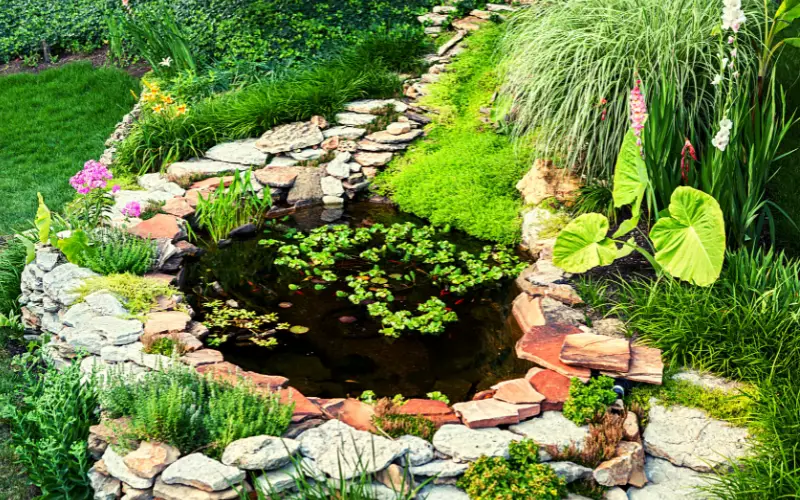
Understanding the conditions that lead to high levels of algae is essential for effective pond maintenance and management. By controlling these factors, pond owners can create a balanced ecosystem where aquatic life, including algae-eating fish, can thrive.
Moreover, recognizing the signs of algae growth is crucial for pond maintenance. Algae can appear as a green film on the surface of the water or as string algae clinging to the pond plants and floor.
When left unchecked, excessive algae can deplete oxygen levels, leading to detrimental effects on fish health and overall pond quality.
Therefore, understanding algae dynamics helps pond owners take proactive measures to maintain their water garden’s health. With the right balance of nutrients, sunlight, and algae-eating fish, pond owners can foster a thriving ecosystem that minimizes algae problems.
Different types of Pond Algae
There are several types of pond algae, each with distinct characteristics and growth patterns. Green algae are among the most common, often appearing as a green film or floating mats on the water’s surface.
Pond algae come in various forms, each with its own characteristics and impact on the pond ecosystem. Here are some of the most common types:
- Planktonic Algae: These are microscopic, free-floating algae that can cause the water to appear green or even “pea soup” like. While some planktonic algae are a natural part of the food chain, excessive growth can lead to oxygen depletion and harm aquatic life.
- Filamentous Algae: Also known as “string algae” or “hair algae,” this type forms long, thread-like strands that can attach to surfaces or float freely in the water. Filamentous algae can quickly overtake a pond, blocking sunlight and hindering oxygen exchange.
- Blue-Green Algae: These are actually bacteria, not true algae, but they often appear as algae blooms. Blue-green algae can produce toxins harmful to humans, pets, and wildlife. They typically form thick, unsightly mats on the water surface.
- Chara Algae: This type of algae resembles small plants with feathery fronds. While it can provide habitat for some aquatic organisms, excessive growth can interfere with swimming and boating.
It’s important to note that some algae growth is natural and even beneficial for a pond ecosystem. However, excessive algae can create problems, so it’s essential to maintain a balance.
These algae thrive in nutrient-rich environments and can rapidly multiply if not kept in check. Another prevalent type is filamentous algae, which forms long, string-like strands that can cling to rocks, plants, and the pond floor.
This type of algae can create unsightly clumps and can be challenging to remove manually. Finally, blue-green algae, also known as cyanobacteria, can produce toxins harmful to fish and other aquatic life, making it crucial for pond owners to monitor their growth.
Understanding these types of algae is vital for effective algae control. Each type of algae may require different treatment methods, whether through natural means, such as introducing algae-eating fish, or through manual removal techniques.
By identifying the specific type of algae present in the pond, owners can tailor their maintenance strategies accordingly. This knowledge not only helps in managing algae but also supports the overall health of the pond ecosystem by ensuring that the right balance of species, including algae-eating fish, is maintained for optimal water pond quality.
Are there Any Fish That Eat Algae in Ponds?
Yes, there are several fish that eat algae in a pond, helping to control algae growth naturally. Many pond owners seek out these algae-eating fish to maintain a healthy pond ecosystem without resorting to chemical treatments.
Some of the most popular algae eaters include koi fish, goldfish, and the Siamese algae eater, all of which have a known appetite for algae. These fish not only consume algae but also contribute to the overall balance of the pond by helping to keep the water clean and clear.
In addition to traditional pond fish, certain loaches, like the pond loach, are also effective algae eaters. These hardy fish thrive in various water conditions and can adapt well to a large pond.
By introducing a mix of algae-eating fish into the pond, owners can effectively manage algae levels while also promoting a diverse aquatic environment. It’s important, however, to ensure that the chosen fish species are compatible with other pond inhabitants and that they can thrive in the specific conditions of the water garden pond.
The 10 Best and Most Effective Algae-Eating Fish for Ponds
When selecting the best fish for ponds that eat algae, several species stand out for their efficiency and compatibility with other pond life. Here are 10 best algae eating fish for ponds:
- Grass Carp: These large, torpedo-shaped fish are voracious algae eaters. They are best suited for larger ponds and should be stocked carefully, as they can overpopulate and damage aquatic plants.
- Siamese Algae Eater: These small, active fish are excellent at controlling hair algae and other types of algae. They are peaceful and can be kept in community tanks.
- Otocinclus Catfish: These tiny catfish are great at cleaning algae from surfaces like rocks and plants. They are peaceful and well-suited for smaller ponds.
- Plecostomus: These popular catfish come in many varieties and are known for their ability to clean algae from surfaces. However, some species can grow very large and may not be suitable for all ponds.
- Dojo Loach: These bottom-dwelling fish are effective at eating algae and detritus. They are hardy and can tolerate a wide range of water conditions.
- Amano Shrimp: These shrimp are not fish, but they are good algae eaters for ponds and can be a great addition to a pond. They are peaceful and can help to keep your pond clean.
- Nerite Snails: These snails are also effective algae eaters and can help to keep your pond clean. They are peaceful and can be a good choice for smaller ponds.
- Molly Fish: These livebearers are omnivores and will eat algae as well as other foods. They are peaceful and can be a good choice for community tanks.
- Guppies: These colorful fish are also omnivores and will eat algae. They are peaceful and can be a good choice for smaller ponds.
- Goldfish: These popular fish are omnivores and will eat algae as well as other foods. They are peaceful and can be a good choice for larger ponds.
Remember: When choosing algae-eating fish for your pond, it’s important to consider the size of your pond, the type of algae you want to control, and the compatibility of the fish with other species in your pond. It’s also important to research the specific care requirements of each species to ensure they thrive in your pond environment.
List of 6 Algae Eater Fish for Large Koi fish Ponds
For larger ponds, selecting the right algae-eating fish is crucial for effective algae control. Here’s a list of six fish that are particularly well-suited for larger ponds:
- Plecostomus (Plecos): Plecos are known for their algae-eating abilities and are commonly used in ponds to help algae control in your pond. They are hardy and can adapt well to various water conditions.
- Siamese Algae Eater (Crossocheilus siamensis): Siamese Algae Eaters are popular for their efficiency in consuming various types of algae, including green algae and black beard algae. They are peaceful and can coexist with other fish in a pond.
- American Flagfish (Jordanella floridae): American Flagfish are small but effective algae eaters. They also feed on small invertebrates and can help maintain a balanced ecosystem in a pond.
- Chinese Algae Eater (Gyrinocheilus aymonieri): Chinese Algae Eaters are known for their voracious appetite for algae. However, they can become aggressive as they grow larger, so it’s important to monitor their behavior in a pond setting.
- Rosy Barb (Pethia conchonius): Rosy Barbs are not only attractive but also consume algae in ponds. They are peaceful and can add color to the pond while contributing to algae control.
- Goldfish (Carassius auratus): Goldfish are popular pond fish that also help in controlling algae. They are easy to care for and come in various colors and patterns, adding visual interest to the pond.
When introducing algae-eating fish to a pond, it’s important to consider the pond’s specific conditions, such as size, water quality, and existing fish species, to ensure compatibility and a balanced ecosystem.
Tips for Maintaining a Clean and Healthy Pond for Algae-Eating Fish
To maintain a clean and healthy pond for algae-eating fish, several key practices should be followed. First and foremost, regular pond maintenance is essential.
This includes removing debris, controlling nutrient levels, and monitoring water pond quality to create optimal conditions for fish and plants.
Additionally, incorporating a variety of pond plants can help absorb excess nutrients, which in turn can mitigate algae growth. Plants like water lilies and hornwort not only enhance the aesthetics of the pond but also contribute significantly to water quality.
Another important aspect of maintaining a healthy pond is ensuring proper aeration. Aeration promotes oxygen circulation, which can help reduce algae growth and support the overall health of fish and other aquatic organisms.
Furthermore, it’s vital to establish a balanced fish population, avoiding overstocking that could lead to excess fish waste and nutrient overload. By following these tips and regularly assessing the pond’s condition, pond owners can create a thriving environment for algae-eating fish while keeping algae levels under control.
Prevent Algae Better By Never Overfeeding Fish!
One of the most effective ways to prevent algae in your pond is to avoid overfeeding fish. Excess fish food that isn’t consumed can decompose, leading to increased nutrient levels in the water, which fuel algae growth.
To ensure that you are feeding your fish appropriately, it’s important to observe their eating habits and provide only what they can consume within a few minutes. This practice not only helps maintain water quality but also supports the health of the fish by preventing overfeeding-related issues.
Additionally, implementing a feeding schedule can help regulate the amount of food provided and minimize waste. By keeping the feeding consistent, pond owners can better control the nutrient levels in the pond while also fostering a routine that promotes healthy fish behavior.
It’s also beneficial to rotate the types of fish food offered, as this can provide essential nutrients and keep the fish engaged. Ultimately, maintaining a disciplined feeding routine is critical for managing algae levels and ensuring a healthy pond ecosystem.
Role of Snails to Help Control Algae
In addition to fish, snails play a significant role in algae control within ponds. These small creatures are natural grazers and have a taste for various types of algae.
By consuming algae from the pond floor and plants, snails help keep excessive algae growth at bay while contributing to the overall balance of the ecosystem.
Various species of snails, such as apple snails and ramshorn snails, can coexist with algae-eating fish, providing an additional layer of algae management.
Furthermore, snails can also help clean up organic debris, further improving water quality and providing a healthier environment for fish. They are hardy and can thrive in a range of water conditions, making them a valuable addition to any pond.
Integrating snails alongside algae-eating fish creates a synergistic effect, where both groups work together to maintain a clean and healthy pond. Their presence is a natural solution to algae control, allowing pond owners to enjoy a vibrant aquatic ecosystem with minimal intervention.
Commonly Asked Questions about the Best Algae Eaters for a Pond (FAQs)
Do Japanese trapdoor snails eat algae?
Yes, Japanese trapdoor snails are herbivores and algae is a primary food source for them. They also consume decaying plant matter and some types of fungi.
What is the best fish to control algae in a pond?
Channel catfish are effective algae eaters in ponds, helping to control excessive growth and maintain water clarity.
What is the best method to control algae?
Reducing nutrient runoff, increasing water circulation, and shading the pond can help control algae. Cooler water temperatures can also slow algae growth.
What smaller fish clean algae?
Several small fish species are excellent algae eaters. Otocinclus catfish, Siamese algae eaters, and Bristlenose plecos are popular choices for keeping aquariums clean.
Do flying foxes eat algae in ponds?
No, flying foxes, also known as fruit bats, do not eat algae in ponds. They are primarily frugivores, feeding on fruits, nectar, and flowers. Their diet does not include aquatic plants or algae found in ponds.
Conclusion
In conclusion, maintaining a healthy pond ecosystem requires understanding algae growth and implementing effective control measures. By introducing the right fish that eat algae, such as koi, goldfish, and Siamese algae eaters, pond owners can significantly reduce algae levels and promote a balanced environment. Additionally, incorporating snails, maintaining proper feeding practices, and ensuring good pond maintenance will enhance water quality and support the overall health of the pond. With diligent care and the right aquatic inhabitants, it’s possible to keep your pond thriving and beautiful while effectively managing algae growth.
You might also like
- What Do Guppies Eat in the Wild: (A Comprehensive Guide)
- Does Goldfish Eat Algae? (5 Best Pond Algae Eaters)
- Do Cherry Shrimp Eat Algae Effectively: The Shocking Truth!
- Do Guppies Eat Algae: A Comprehensive Guide You’ll Ever Need!
- Do Cory Catfish Eat Algae: Unveiling the Top 10 Algae-Eaters
- What Algae Eaters Can Live with Goldfish? (5 Best Tankmates)
- Are Cory Catfish Good Cleaners: (Find Out Now!)
- Top 10 Self Cleaning Fish Tank: (No One Tells You!)
- Siamese Algae Eater Fish 101: Ultimate Care Guide for Beginners!


